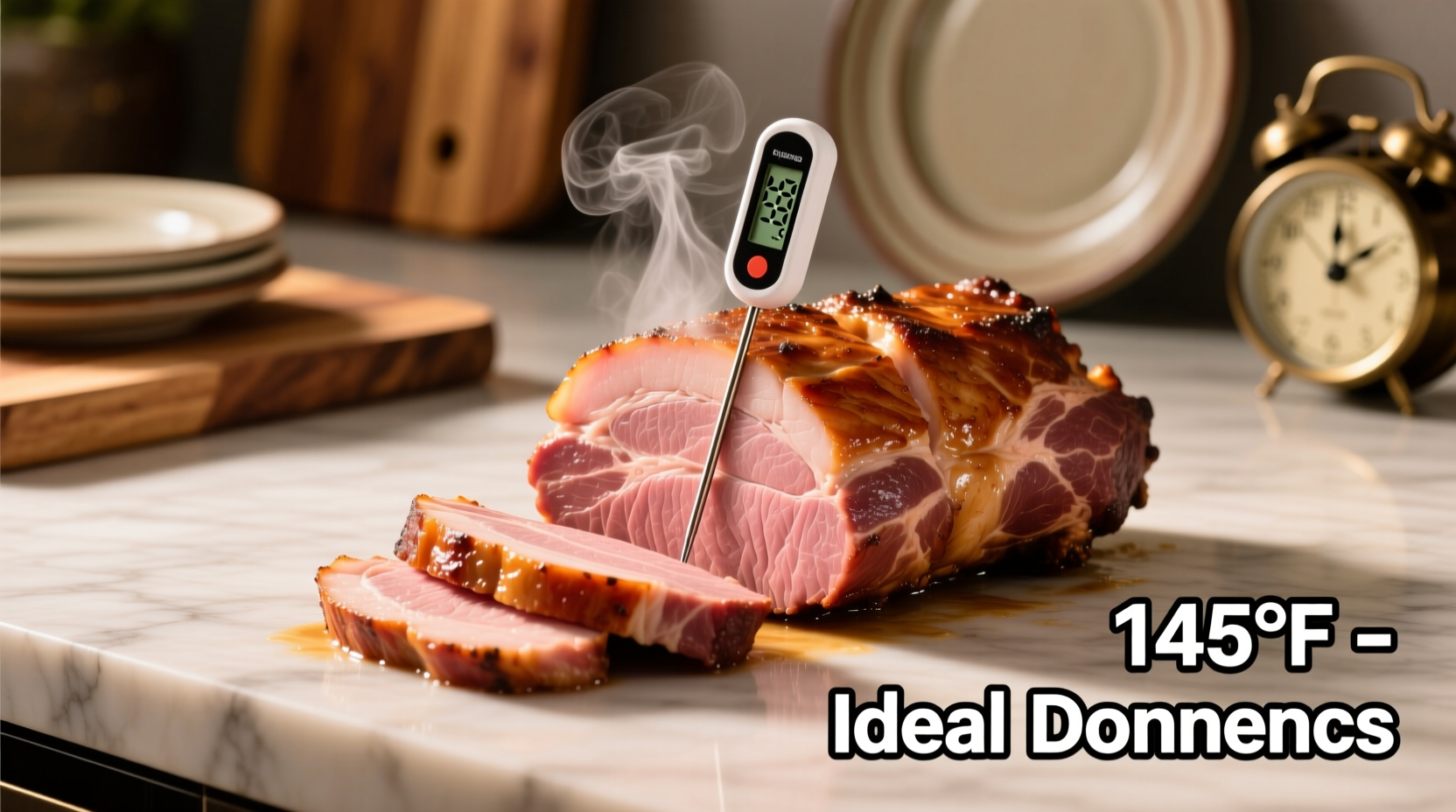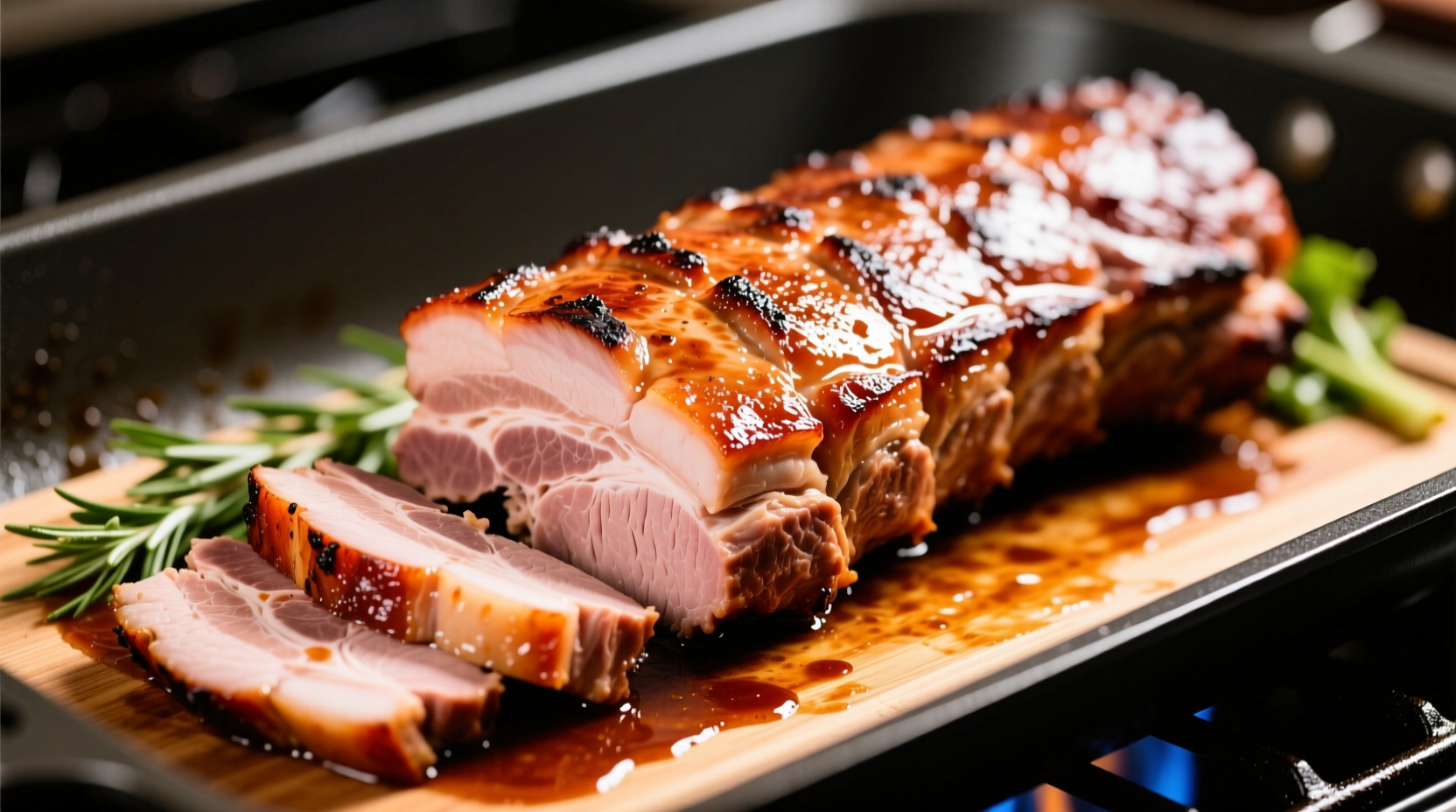Stop guessing and start serving perfectly cooked pork loin with confidence. Whether you're preparing dinner for family or hosting guests, understanding the exact cooking time and temperature requirements transforms this lean cut from potentially dry to irresistibly juicy. This guide delivers the science-backed method professional chefs use, plus practical solutions for common cooking pitfalls.
The Science Behind Perfect Pork Loin Cooking
Gone are the days of overcooked, dry pork loin. Modern food science has revolutionized our understanding of safe pork preparation. The USDA updated its recommendations in 2011, lowering the safe internal temperature from 160°F to 145°F with a 3-minute rest period. This change, based on extensive research by the National Pork Board and USDA Food Safety and Inspection Service, allows pork to remain slightly pink while eliminating harmful pathogens.
| Year | Recommended Temperature | Scientific Basis |
|---|---|---|
| Pre-2011 | 160°F (71°C) | Conservative safety margin |
| 2011-Present | 145°F (63°C) + 3 min rest | Trichinella parasite eliminated at lower temperatures |
This timeline of USDA recommendations reflects improved understanding of pork safety. The critical factor isn't cooking time alone, but achieving the proper internal temperature. A meat thermometer is your most essential tool - time estimates serve only as guidelines since variables like starting temperature, oven accuracy, and cut thickness significantly impact results.
Your Step-by-Step Cooking Guide
Follow this professional method for consistently perfect results, whether you're using an oven, grill, or slow cooker. Remember that cooking time varies based on your specific equipment and pork loin dimensions.
Oven Method (Most Reliable)
- Preheat oven to 375°F (190°C)
- Pat pork loin dry and season generously
- Sear in hot skillet for 2-3 minutes per side
- Transfer to roasting pan and insert meat thermometer
- Cook until thermometer reads 140°F (60°C)
- Remove from oven and rest 3-5 minutes (temperature will rise to 145°F)

Cooking Time Variables Explained
While the general rule is 20-25 minutes per pound at 375°F, these factors significantly impact your actual cooking time:
- Starting temperature: Chilled meat (from refrigerator) requires 15-20% more cooking time than room-temperature meat
- Cut thickness: Thicker cuts need lower temperature and longer time to prevent exterior overcooking
- Oven accuracy: Use an independent oven thermometer as built-in thermostats often vary by 25°F
- Rack position: Middle rack provides most even heat distribution
Troubleshooting Common Problems
Even experienced cooks encounter issues with pork loin. Understanding these context boundaries helps prevent disappointment:
Dry Pork Loin
Cause: Overcooking beyond 145°F or insufficient resting time
Solution: Always remove from heat at 140°F and allow proper resting. For already-cooked dry pork, slice thinly against the grain and serve with pan juices or sauce.
Undercooked Concerns
If your pork reaches 145°F but appears too pink for your comfort, remember that color isn't a reliable doneness indicator. The National Pork Board confirms that properly cooked pork can retain a slight pink hue. For complete peace of mind, verify with a calibrated thermometer rather than visual assessment.
Pro Tips for Flavor Enhancement
Elevate your pork loin from basic to exceptional with these professional techniques:
- Dry brine overnight: Salt the pork loin 12-24 hours before cooking for deeper flavor penetration and improved moisture retention
- Strategic searing: Sear at 450°F for 90 seconds per side to maximize Maillard reaction without overcooking
- Temperature monitoring: Insert thermometer probe horizontally through the thickest part for accurate reading
- Resting technique: Tent loosely with foil (not sealed) to maintain heat without steaming the crust
Alternative Cooking Methods Compared
Different cooking approaches require adjusted timing. Always verify with a thermometer regardless of method:
| Method | Temperature | Time Per Pound | Best For |
|---|---|---|---|
| Oven roasting | 375°F | 20-25 minutes | Most consistent results |
| Grill (indirect) | 350°F | 25-30 minutes | Smoky flavor profile |
| Slow cooker | Low setting | 4-5 hours | Hands-off preparation |
| Sous vide | 140°F | 2-4 hours | Precise temperature control |
Remember that slow cooking methods require less precision with timing but still need temperature verification. The National Center for Home Food Preservation confirms that slow cookers maintain temperatures between 170°F-280°F, well within the safe zone for eliminating pathogens when cooked for sufficient time.
Mastering Pork Loin Timing for Perfect Results
Cooking pork loin successfully combines precise timing with temperature monitoring. By understanding the relationship between time, temperature, and meat characteristics, you'll consistently achieve restaurant-quality results. Always prioritize internal temperature over strict timing, account for your specific cooking variables, and never skip the crucial resting period. With this approach, you'll transform pork loin from a potentially challenging cut into a reliable centerpiece for any meal.











 浙公网安备
33010002000092号
浙公网安备
33010002000092号 浙B2-20120091-4
浙B2-20120091-4